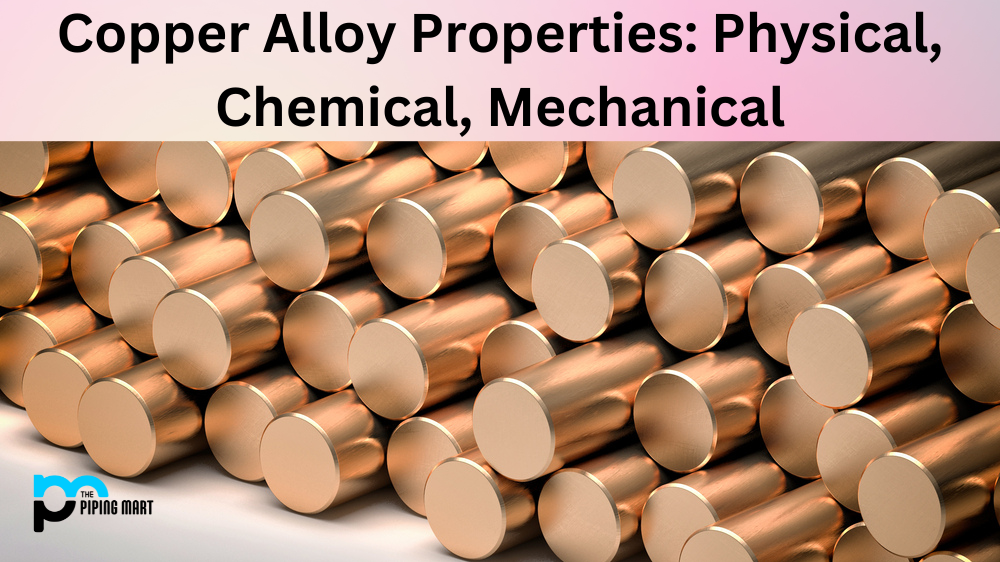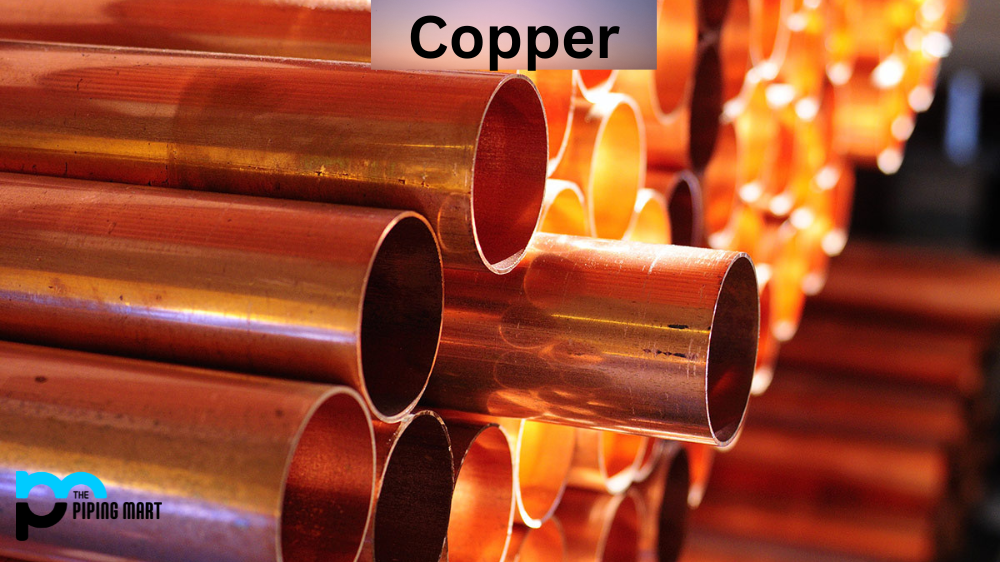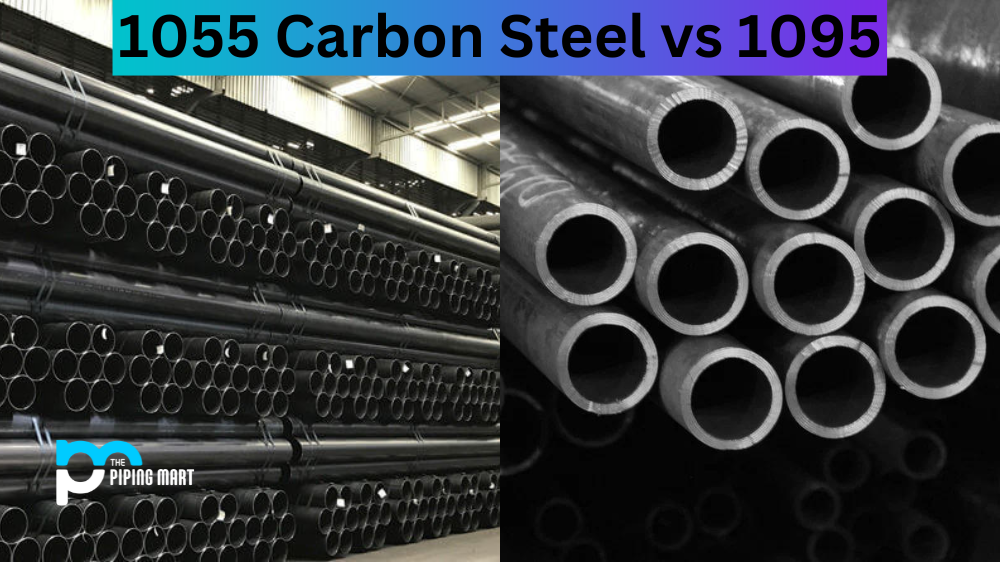Copper is an incredibly versatile metal, and when combined with other metals, it can form a variety of alloys that have unique and varied properties. Knowing the physical, chemical, and mechanical properties of these alloys will help you determine the best fit for your application. Let’s explore why copper alloys are so useful in engineering.
Physical Properties
The physical properties of copper alloys vary greatly depending on the proportions of each element contained in the alloy. Many copper alloys are malleable and ductile, making them well-suited for applications such as electrical wiring and tubing. Alloys with higher concentrations of other metals, such as nickel or aluminum, may be harder or more corrosion-resistant than pure copper alloys.
- Copper alloys are a class of metals that contain copper as their primary element.
- Copper alloys are known for their high electrical and thermal conductivity, as well as their resistance to corrosion.
- The most common types of copper alloys are bronze and brass.
- Copper alloys can be used in a variety of applications, including electrical wiring, plumbing, and coins.
- Some of the most famous copper alloys include the Statue of Liberty and the penny.
Chemical Properties
Copper alloys are highly corrosion resistant due to their low reactivity with most chemicals and their ability to form protective oxide layers when exposed to air. This makes them ideal for use in harsh environments where other materials may not be suitable. Copper also has antimicrobial properties, which make it especially useful in medical applications where bacteria can be a major concern.
- Copper is a chemical element with the symbol Cu (from Latin: cuprum) and atomic number 29. It is a soft, malleable, and ductile metal with very high thermal and electrical conductivity. A freshly exposed surface of pure copper has a pinkish-orange color. Copper is used as a conductor of heat and electricity, as a building material, and as a constituent of various metal alloys, such as sterling silver used in jewelry, cupronickel used to make marine hardware and coins
- Alloys of copper are classified into four major groups: brass, bronze, copper-nickel alloys, and miscellaneous alloys. The first three groups comprise both wrought and cast products. A fifth group includes leaded coppers. Wrought products are those that have been worked or forged by rolling, hammering, or other processes at elevated temperatures; they generally have good ductility (the ability to be drawn into wire), formability (the ability to be formed into sheet or strip), and solderability (the ability to be soldered). Cast products have been cooled from the liquid state without having been wrought; they generally are harder and stronger than wrought products but have poorer ductility
- The most important use of copper is in electrical wiring. Copper is the best conductor of electricity except for silver. It is used for telephone wires, computer cables, household wiring, power generation and transmission lines, automobile electrical systems, and many other applications where electrical conductivity is required. Because it conducts electricity so well, copper is also used in making heating elements for electric ovens and irons
- Copper alloys are widely used in coins because they are harder than pure copper yet still easy to work with. The U.S. penny is made of 97% zinc with a coating of pure copper to give it its familiar reddish color; without the coating it would be a dull gray color. Other common coinage metals include aluminum, brass (an alloy of copper and zinc), cupronickel (an alloy of copper and nickel), bronze (an alloy of copper, tin, and zinc), gold, silver, palladium, platinum
Mechanical Properties
Mechanical properties refer to how materials respond when they are subjected to forces such as stress or strain. Copper alloys tend to have good strength and toughness, making them suitable for use in many structural components such as fasteners, springs, gears, pins, etc. They also tend to have good fatigue resistance, which makes them ideal for components that will undergo repeated cycles of loading and unloading over time.
Ductility
Ductility is a measure of a material’s ability to deform under tensile stress. It is usually expressed as a percentage elongation or percentage area reduction. Copper alloys are generally very ductile, with most possessing an elongation of at least 30%.
Malleability
Malleability is a measure of a material’s ability to deform under compressive stress. It is usually expressed as a percentage reduction in area. Copper alloys are generally very malleable, with most being able to be rolled or hammered into thin sheets with little difficulty.
Strength
Strength is a measure of a material’s ability to resist deformation under load. It is usually expressed as a yield strength or ultimate tensile strength. Copper alloys are generally quite strong, with most having yield strengths of at least 200 MPa (29 ksi).
Fatigue Strength
Fatigue strength is a measure of a material’s ability to resist fracture under cyclic loading. It is usually expressed as a fatigue limit or endurance limit. Copper alloys generally have good fatigue strengths, with most being able to withstand at least 10 million cycles before failure.
Corrosion Resistance
Corrosion resistance is a measure of a material’s ability to resist degradation in the presence of a corrosive environment. Copper alloys are generally very resistant to corrosion, with most being able to withstand exposure to atmospheric conditions without significant deterioration
Conclusion:
Copper alloys offer a wide range of physical, chemical, and mechanical properties that make them ideal for a variety of engineering applications. Their versatility allows them to be used in everything from electrical wiring to medical equipment – making them one of the most commonly used metals in manufacturing today! Understanding the unique characteristics of each alloy will help you choose the right material for your application needs. With careful selection, copper alloys can help ensure that your designs are reliable and up to industry standards!

Pipingmart is a B2B portal that specializes in metal, industrial and piping items. Additionally, we share the latest information and information about materials, products and various types of grades to assist businesses that are involved in this business.




